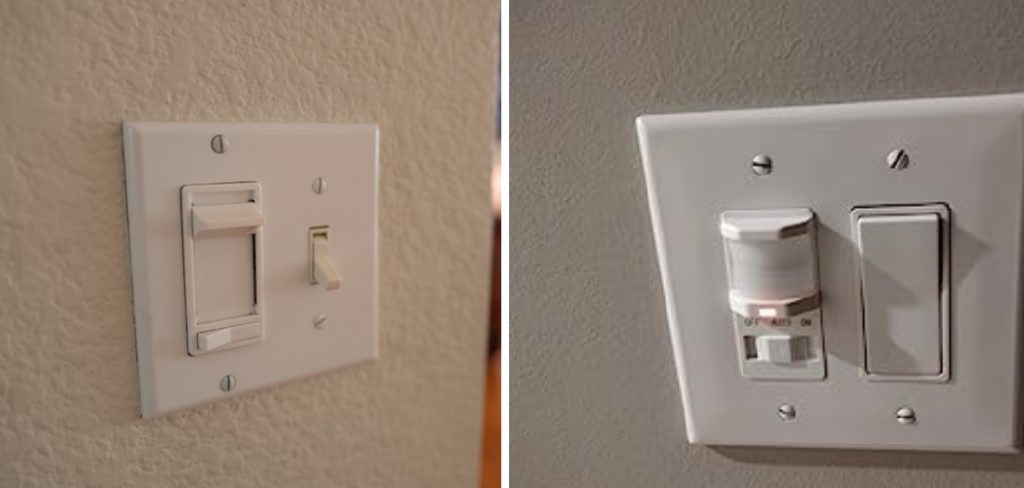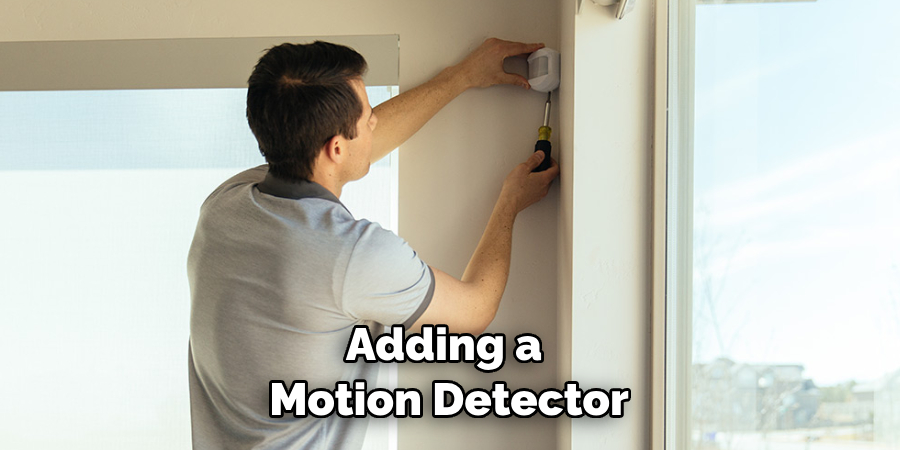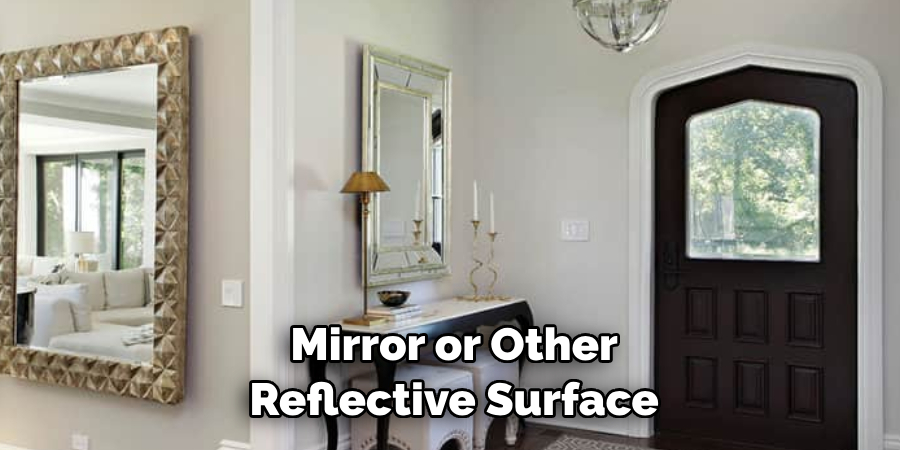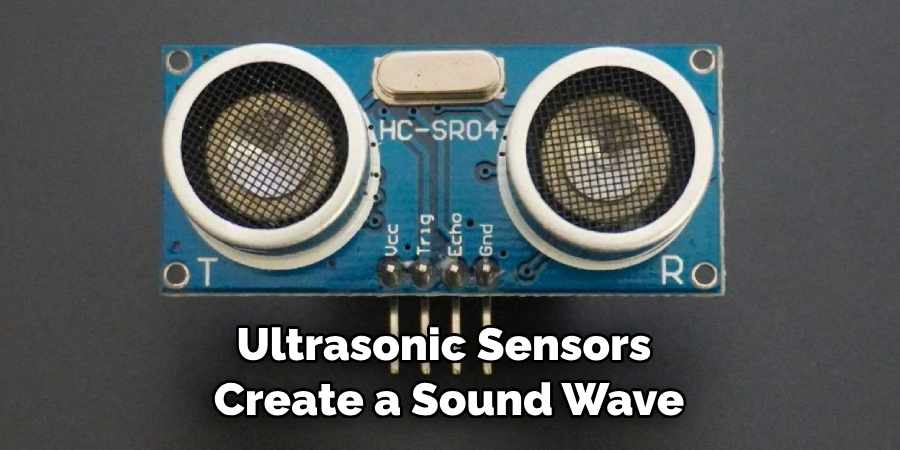Are you trying to find an effective way to keep your occupancy sensor triggered without having a person in the room? Occupancy sensors can be incredibly useful, as they help conserve energy by automatically turning off lights when a room is unoccupied.

Unfortunately, keeping these sensors triggered without motion isn’t always easy. Fortunately, there are some creative solutions that could work for you so that you don’t spend any more money on electricity than necessary!
In this blog post, we’ll discuss different strategies for how to keep an occupancy sensor triggered without motion. Ready to dive in and explore all of your options? Read on!
9 Best Ways on How to Keep an Occupancy Sensor Triggered Without Motion
1. Place Reflective Objects in the Room:
One way to keep an occupancy sensor triggered without motion is by placing reflective objects in the room, such as mirrors or metallic balloons. The light from these objects will be reflected back onto the sensor and cause it to stay active. This simple trick can help you save on energy bills while still keeping the lights in the room turned off when not in use.
2. Use an Automated Timer:
If you want to keep an occupancy sensor triggered without motion, then you can also try using an automated timer. This will allow you to pre-program times for the lights to be switched on and off. That way, you don’t have to manually control the switch or remember to turn off the lights when you leave.
3. Install a Smart Home System:
Another option for keeping an occupancy sensor triggered without motion is using a smart home system. This technology allows you to control everything in your home, including lighting, from your smartphone or tablet. You can set up schedules with the system so that lights automatically switch off when no one is present.
4. Add a Motion Detector:

If you want to keep an occupancy sensor triggered without motion, then you can also try adding a motion detector. This device will detect any movement in the room and switch off the lights after a set amount of time. That way, your lights won’t automatically turn on when someone enters the room but will still switch off when the room is empty.
5. Install a Heat Sensor:
Another way you can keep an occupancy sensor triggered without motion is by installing a heat sensor. This device will detect any changes in temperature and switch off the lights accordingly. That means that even if someone enters the room, the lights won’t automatically turn on unless they increase the temperature of it as well.
6. Install an Infrared Sensor:
In addition to a heat sensor, you can also install an infrared sensor. This device detects any motion within the room and will switch off the lights accordingly. The great thing about this type of sensor is that it doesn’t require direct contact with humans or animals in order for it to work properly.
7. Use a Light Sensor:
Another effective way to keep an occupancy sensor triggered without motion is to use a light sensor. This device will detect when the room is dark and switch off the lights accordingly. This type of sensor works best in rooms that don’t get too much natural light, such as basements or attics.
8. Install a Passive Infrared Sensor:
Similar to an infrared sensor, you can also install a passive infrared (PIR) sensor. This device detects motion and heat in the room and will switch off the lights accordingly. The great thing about this type of sensor is that it’s energy efficient as well, so it won’t use too much energy when running.
9. Place a Radio in the Room:
Finally, another creative way to keep an occupancy sensor triggered without motion is by placing a radio in the room. The sound of the music will create enough movement for the sensor to stay active without requiring anyone to be present in the room. This is an inexpensive and easy way to make sure that your lights stay off when not in use.

These are some of the best ways to keep an occupancy sensor triggered without motion. With these solutions, you can start conserving energy while still keeping your lights off when not in use. If you have any questions, don’t hesitate to contact a professional for more information about the different types of sensors available and how they can help you save money on electricity bills.
Additional Tips and Tricks to Keep an Occupancy Sensor Triggered Without Motion
1. If your occupancy sensor is installed in a high-traffic area, you can place a fan or other device near the sensor to simulate motion and keep it triggered.
2. You can use a timer switch to keep your occupancy sensor triggered for a specific amount of time without any motion being detected.
3. Covering up your occupancy sensors with objects such as curtains, rugs, or furniture can help keep them triggered without detecting any motion.
4. If you’re looking for a more permanent solution, try installing multiple occupancy sensors in the same space to ensure that at least one sensor is always triggered by motion.
5. You can also use a smart plug or outlet to override the settings of your occupancy sensor and keep it triggered without motion.
6. You can also try using a light dimmer switch for occupancy sensors that are installed in rooms with low-level lighting. By setting the dimmer switch to its lowest setting, you can keep your occupancy sensor triggered without any motion detection necessary.
7. If you’re looking for a long-term solution, consider investing in a smart home system that will allow you to customize the settings of your occupancy sensors and keep them triggered regardless of motion.

8. If you’re looking for a cost-effective solution, try placing a mirror or other reflective surface near your occupancy sensor. This can help simulate motion and keep it triggered without any actual movement present.
9. In addition to the above tips, be sure to regularly check and clean your occupancy sensor’s lenses so that it can detect motion properly.
10. Finally, if you’re having trouble keeping your occupancy sensor triggered without motion, try consulting with an experienced electrician or automation specialist for additional advice and support.
By following these tips and tricks, you can ensure that your occupancy sensor is always triggered without the need for motion detection. With these solutions in place, you can rest assured that your home or office will be kept safe and secure. So take some time to explore different options and find the best solution for keeping your occupancy sensors triggered without any motion present. Happy automating!
Frequently Asked Questions
What is an Occupancy Sensor?
An occupancy sensor is a device designed to detect when someone or something is present in a room. Occupancy sensors are typically used in commercial and industrial settings to regulate lighting, HVAC systems, and other automated functions. Occupancy sensors can be wired directly into a building’s electrical system, or connected to existing security systems.
How Does an Occupancy Sensor Work?
Occupancy sensors detect motion by using either passive infrared (PIR) technology or ultrasonic sound waves. PIR occupancy sensors use infrared radiation to detect the presence of people or objects in a room. Ultrasonic sensors create a sound wave that is reflected off of objects in the room and used to detect motion.

How Can an Occupancy Sensor be Kept Triggered Without Motion?
Occupancy sensors can be kept triggered without motion by using a variety of methods. An occupancy sensor may have a “hold” feature, which keeps it in the activated state for a specific period of time. Some occupancy sensors can be connected to an external timer, allowing them to stay active at specific times throughout the day. Additionally, some occupancy sensors can also be wired into existing lighting circuits or HVAC systems to keep them triggered without motion.
Are Occupancy Sensors Safe?
Yes! Occupancy sensors are safe to use, and can even save energy by automatically turning off lights or HVAC systems when not in use. Occupancy sensors also provide a level of security, as their presence may deter potential intruders. For added peace of mind, always check with your local building codes to ensure that any occupancy sensor you install meets applicable safety requirements.
What Other Uses Are There for Occupancy Sensors?
Occupancy sensors can also be used to control automated functions such as music, video, or security systems. Additionally, they can be used for environmental monitoring and home automation applications, such as turning on fans or lighting when someone enters a room. With the right setup, occupancy sensors can provide an additional level of convenience and security to any building.
Conclusion
Now you know how to keep an occupancy sensor triggered without motion, as well as the many additional uses of occupancy sensors. Whether you’re using them for energy efficiency or security purposes, occupancy sensors are a great way to automate tasks in any building. With the right setup and installation, occupancy sensors can provide an extra level of convenience and peace of mind for years to come.
About
Safety Fic is a distinguished figure in the world of Diy design, with a decade of expertise creating innovative and sustainable Diy solutions. His professional focus lies in merging traditional craftsmanship with modern manufacturing techniques, fostering designs that are both practical and environmentally conscious. As the author of diy, Safety Fic delves into the art and science of Safety Fic-making, inspiring artisans and industry professionals alike.
Education RMIT University
(Melbourne, Australia) Associate Degree in Design (Safety Fic) Focus on sustainable design, industry-driven projects, and practical craftsmanship. Gained hands-on experience with traditional and digital manufacturing tools, such as CAD and CNC software.
Nottingham Trent University
(United Kingdom) Bachelor’s in diyfastly.com and Product Design (Honors) Specialized in product design with a focus on blending creativity with production techniques. Participated in industry projects, working with companies like John Lewis and Vitsoe to gain real-world insights.
Publications and Impact
In diy, Safety Fic his insights on indoor design processes, materials, and strategies for efficient production. His writing bridges the gap between artisan knowledge and modern industry needs, making it a must-read for both budding designers and seasoned professionals.
